Welcome to the wild and wonderful world of the crocodile fern! The distinctive Microsorum musifolium ‘Crocodyllus’ features textured fronds resembling the thick, scaly skin of its namesake reptile.
Hailing from the tropical rain forests of Southeast Asia and Australia, its unique foliage and hardy nature make it a captivating addition to any indoor space.
Our comprehensive crocodile fern care guide dives deep into the secrets of this exotic plant, exploring its origins and preferred growing conditions. We’ll cover everything you need to know, from lighting, watering, and temperature requirements to pest control and propagation techniques.
Let’s get started and unleash the crocodile within!
Table of Contents
Crocodile Fern Care Guide
History, habitat, and characteristics

Crocodile fern (Microsorum musifolium) is an epiphytic plant, meaning it grows on trees in its native habitat of Malaysia and nearby ecosystems. This cool habit allows it to absorb nutrients and moisture from the warm, humid air and any debris around its roots.
This tropical fern (also known as the alligator plant — crocodile or alligator, who can keep them straight anyway?) isn’t a large plant, maxing out at about 2-3 feet tall and across when full-grown. In its native habitat (i.e., the perfect conditions), it may grow as big as 5 feet, but this is unlikely when it’s grown as a houseplant.

Despite its petite stature, the unique texture of the alligator plant’s leathery, strap-like fronds, with their scaly, dark-green veins, will still make it a head-turner in your collection.
Light

Epiphytic plants enjoy dappled shade because the tree canopies above protect them from the sun, and the crocodile fern is no different. Grow crocodile fern plants in bright, indirect light and keep them away from hot afternoon sun.
North-facing and east-facing windows are ideal for most ferns, but if you only have west or south windows, place it off to the side or use a sheer curtain to filter the direct sun. Too much direct light can scorch the fronds and dehydrate your plant. Light green fronds or crispy tips are signs that your ‘Crocodyllus’ fern is getting too much light.
They can handle a bit of shade, but if the fronds appear weak and reach toward the light, you might need to provide brighter light. In cases like this, an artificial grow light (LED or full spectrum) can come in handy.
Lighting tips:
- Place your fern near a north- or east-facing window where it can enjoy filtered sunlight.
- A little direct sunlight is okay, but remember to limit it and avoid the hottest hours of the day (between 10 am and 4 pm).
- Use a sheer curtain to deflect harsh sun.
Water
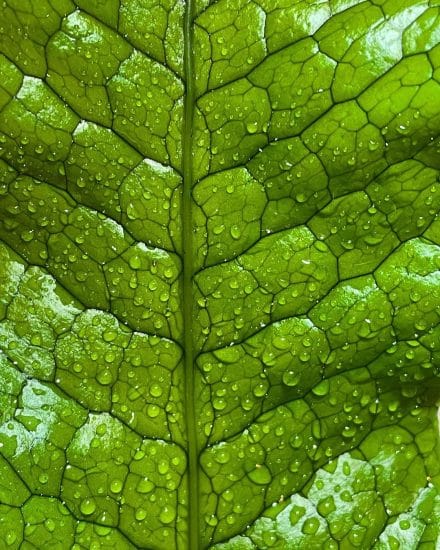
This tropical species loves to be watered often, but you don’t want your crocodile fern sitting in a puddle.
When it’s time for a drink, give your fern a thorough soak with room-temperature water. Let the water flow through the drainage holes, and then double-check there’s no excess lurking around.
To tell when your crocodile fern is thirsty, just stick your finger an inch or two into the soil. It should feel damp but not soaking wet. If you’re unsure, it’s better to wait a little longer before watering. You’ll find these plants are less thirsty in the winter than during the growing season.
You can tell your fern has had too much water if its leaves are turning yellow, the stems are getting mushy, or the potting mix just won’t dry out. Cut back on watering and let the soil dry out a bit before getting back in the watering groove. The quickest way to kill a houseplant is by overwatering.
Crocodile ferns don’t really like to be dry, though, so you’ll want to avoid both overwatering and letting the soil dry out completely. These plants are used to moist conditions, and insufficient water can lead to older leaves turning yellow or becoming dry and brittle. If that’s the case, try watering your crocodile fern more frequently.
Temperature and humidity
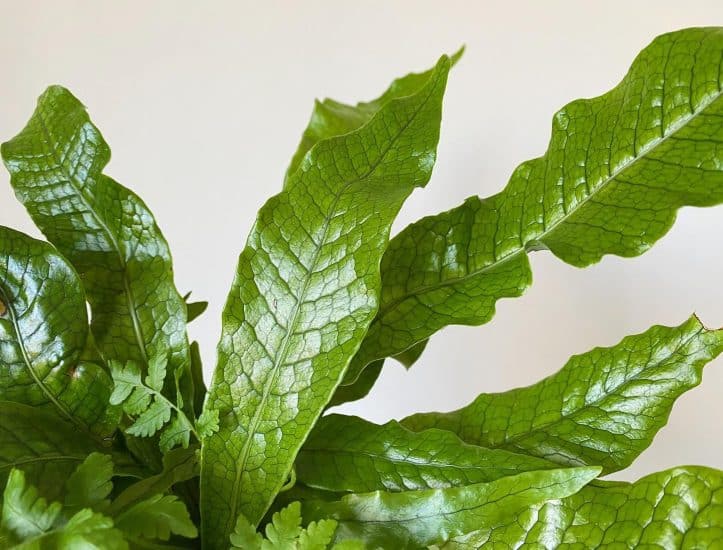
The ideal temperature range for crocodile ferns is between 65-80°F (18-27°C) during the day, with a slight drop-off at night. These ferns are sensitive to both extreme heat and cold, so don’t place them near heating or cooling vents, open windows with drafts, or chilly doorways.
As a testament to their tropical origin, crocodile ferns prefer a humid environment. Aim for humidity of 50%-70% for optimal growth. If the fronds turn brown or become crispy, the humidity is probably too low. On the other hand, excessive humidity or moisture can lead to issues such as root rot or fungal growth.
To achieve optimal humidity for your fern, place it on a pebble tray filled with water, group it with other humidity-loving plants, or run a humidifier nearby, ideally about 6 hours a day.
Keep in mind that while manually misting might offer temporary moisture — and be a meditative activity for you — it’s not a long-term solution for maintaining humidity. However, misting can remove dust, as well as help you spot pests before they turn into an infestation, so it’s not a total waste of time.
Soil and planting

The right environment for your Microsorum musifolium starts with the soil composition. Opt for a fast-draining potting mix that helps mimic their natural tree-bark growing environment. Incorporating a coconut husk layer can further benefit your fern’s growth and keep the soil moist.
Poor soil can lead to various issues for your crocodile fern. Signs of an inadequate potting mix include stunted growth, yellowing leaves, or root rot. If you notice any of these symptoms, reevaluate your soil mixture and make adjustments accordingly. Adding perlite is a simple and affordable way to improve drainage.
Especially with moisture-loving plants like crocodile fern, some houseplant enthusiasts swear by adding peat moss to the soil. However, the sustainability of harvesting peat moss, one of the most valuable carbon sinks on the planet, is questionable. Coconut coir is an effective, environmentally sound alternative for maintaining indoor plant soil moisture without drowning its roots.
Fertilize your crocodile fern with a balanced houseplant fertilizer during the growing season. Be cautious not to over-fertilize, which can do more harm than good. Signs of too much fertilizer include brown, burnt-looking foliage or wilting that appears despite adequate watering. If you suspect over-fertilization, flush with water, or replant in extreme cases.
Propagation
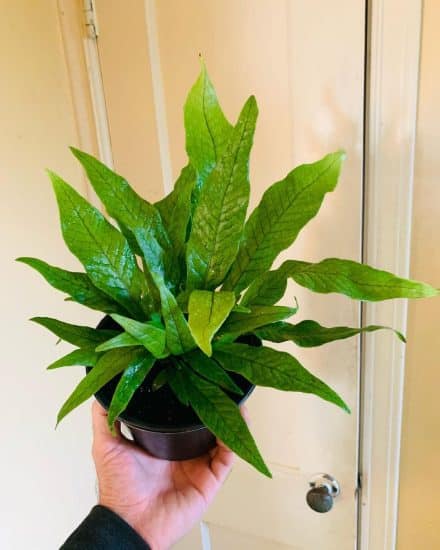
To help you multiply your crocodile fern collection, we’ll walk you through two fantastic methods — dividing the roots and cutting the crown. By following these steps, you’ll be on your way to growing loads of new ferns in no time!
Propagating through division:
- Gently remove the crocodile fern from its pot without damaging the roots.
- Examine the root system like a detective on a mission, looking for any natural divisions or sections. If you see multiple crowns (the area where the stem joins the root), you’ve hit the jackpot!
- Carefully separate the sections using your hands or a sterilized knife. Make sure each division has enough healthy roots and foliage to show off as the new plant matures.
- Pot each division in a container filled with an aroid potting mix. Remember, crocodile ferns love good drainage and air circulation!
- Water lightly and frequently while your ferns are young. Keep them away from intense light, instead providing consistent indirect sunlight to encourage new growth.
Propagating by cutting the crown:
- Gently remove your crocodile fern from its pot.
- With a sterilized knife or shears, cut through the fern’s crown evenly, dividing your plant into equal wedges, each with an ample amount of roots and foliage.
- Plant each wedge in a separate container, firmly pressing the mix around the roots for extra support as the new plant matures.
- Water each pot lightly and frequently, being careful not to over-water (nobody likes soggy roots or soggy soil!).
- Protect the cuttings from intense light while they establish themselves in their new pots.
Common Issues
Just like other houseplants, crocodile ferns can have their fair share of troubles. Here are three of the most familiar problems you might bump into with your crocodile fern plant.
Burnt leaf tips
If you’ve noticed the edges or tips of your crocodile fern’s leaves turning brown or black, don’t panic. It’s likely due to excess direct sunlight. Crocodile fern loves moderate to low light conditions, and when they get too much direct sun, their leaves can burn.
Fixing this issue is as simple as moving your fern to a shadier spot or putting it near a window with a sheer curtain to diffuse bright light. Keep an eye on your plant to see if things get better, and (here’s a pro tip) trim away any damaged leaves to encourage new, healthy growth.
Pale fronds
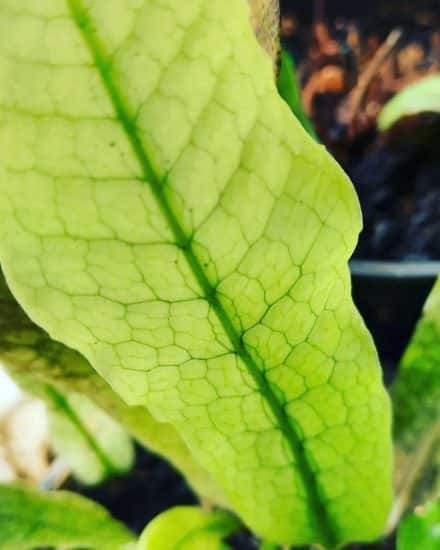
If you’re seeing pale fronds on your crocodile fern plant, it could mean that your plant is feeling thirsty or getting a bit too much light. It could also mean you need to add fertilizer. When the fronds lose their lush, green color and begin to look pale or yellow, that’s your cue to reevaluate your care routine.
Evaluate and adjust your watering regimen by letting water flow from the drainage holes when watering and letting the top inch of soil dry out between waterings. If too much light is the culprit, move your fern to a spot that offers more indirect or filtered light. And add a balanced houseplant fertilizer each time you water, except during the coldest months of winter.
Keep an eye on your plant for any improvements, and feel free to trim away any sad-looking fronds to help your fern focus on growing healthy and happy leaves.
Pests and diseases

Crocodile fern plants are usually pretty easygoing when it comes to pests and diseases, which is one of the reasons why we love them so much! But there are still a couple of issues they might face, including scale insects and the infamous root rot.
Scale
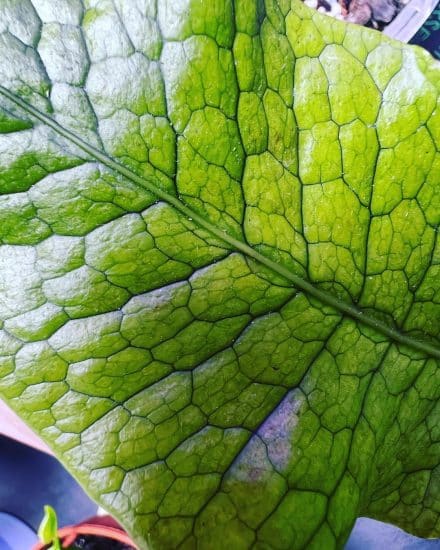
Scale are small, flat, oval-shaped, and come in shades of brown, tan, or white. They look like tiny shells that attach to your fern’s leaves and stems to suck up the sap and nutrients, ultimately killing the plant if left untreated. Heavy infestations will also exhibit a sticky “honeydew” substance.
To save your crocodile fern, snip off the infested leaves and stems with a pair of clean scissors. Next, give your fern a gentle wipe-down using a cloth or sponge soaked in water and mild dish soap. For more persistent pests, you might need to call in the big guns: horticultural oil or insecticidal soap — just follow the label’s directions.
Root Rot
Root rot is a common nemesis for many indoor plants, including our beloved crocodile fern. It creeps in when the plant’s roots are swimming in too much moisture, causing waterlogged, decaying roots that often emit an unpleasant “rotting” smell.
Think your crocodile fern is dealing with root rot? Look for telltale signs like yellowing leaves, wilting, and a funky odor coming from the soil. Gently take your fern out of its pot and check the roots. Healthy roots should be firm and white, while rotten ones will be mushy, slimy, and brown or black.
To banish root rot, cut away those sickly roots with sterilized scissors and repot your fern into some fresh, well-draining soil. And, of course, always make sure the pot has enough drainage holes so excess water can flow out of the pot and away from the roots.
Conclusion

That’s it for our crocodile fern care guide! You’re ready to embrace the tropical vibe and keep your crocodile fern thriving with the right mix of light, water, temperature, and humidity.
Crocodile fern care summary:
- Embrace bright, indirect light to keep your fern’s fronds looking their best.
- Water thoroughly when no more than the top inch of soil has gone dry.
- Maintain high humidity by using a pebble tray or humidifier.
By following the tips provided in this guide, you can nurture a stunning and healthy crocodile fern to show off to your friends and family. And if you have any questions, don’t hesitate to reach out to us! We’re always here to help you and your plants thrive.
FAQ
How big does a crocodile fern get?
Typically, they can reach a height of about 2-3 feet (60-90 cm.) and spread their fronds about 3 feet (90 cm.) wide. You won’t need to worry about them outgrowing your space too quickly. These ferns tend to grow at a leisurely pace.
Should I mist my crocodile fern?
Misting your crocodile fern can be a helpful way to keep its fronds clean and free of dust, but it’s not the most effective way to maintain the humidity levels these plants need. While misting can provide temporary relief from dry conditions, it evaporates quickly.
Still, misting can be a relaxing activity for plant lovers and a good way for you to connect with your indoor garden. If you choose to mist your fern occasionally to clean the leaves, be sure to wipe them gently with a damp cloth afterward.
Are crocodile ferns safe for pets?
Good news for pet owners — crocodile ferns are nontoxic and safe for both cats and dogs. However, it’s always a good idea to keep an eye on your furry friends around houseplants. Consumption of any plant material could lead to an upset stomach.
To be on the safe side, place your crocodile fern in an area less accessible to curious pets, keeping both your fern and four-legged family members happy and healthy.
Where do you place a crocodile fern?
Crocodile ferns thrive in bright, indirect light, so place them near a window with a sheer curtain to filter the sunlight, or set them back from the window to avoid direct sunlight. Keep them away from direct sunlight during the hottest hours of the day (between 10 am and 4 pm) to protect their delicate fronds from scorching.
Additionally, crocodile ferns love a humid environment, so placing them in a room with higher humidity, such as a bathroom or kitchen, can help them grow to their full ferny potential.



